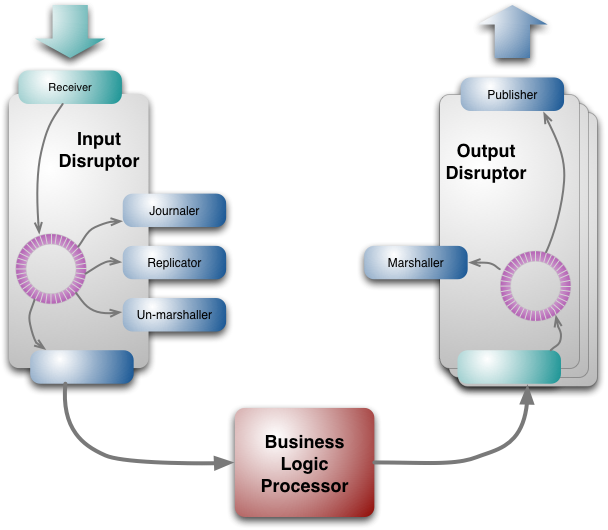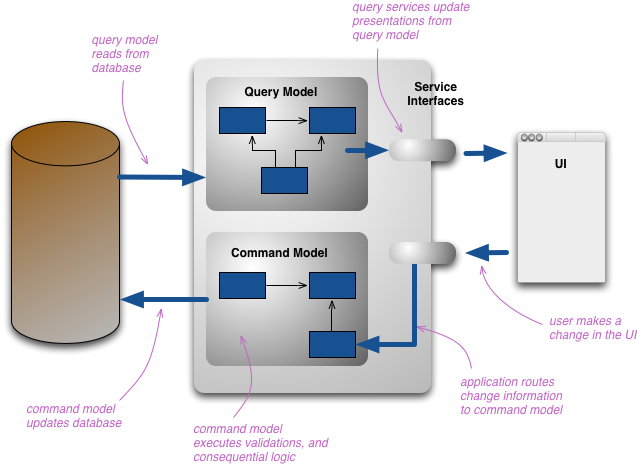tagged by: event architectures
Focusing on Events
One of the longest running ways to think about an enterprise application is as a system that reacts to events from the outside world. This is a way of thinking that became established in the structured design community in the second half of the 80's. You hear of it now under the banner of “Event-Driven Architecture”. In the mid 2000's I started collecting some patterns for these kinds of systems, but haven't since been able to turn them into anything more substantial. Despite their rough and ready nature, I do think they provide some useful ideas around the nature of Event Collaboration, introducing the term “Event Sourcing”, using Parallel Models to represent hypothetical states of the world, and how domain logic can be organized using an Agreement Dispatcher.
What do you mean by “Event-Driven”?
Towards the end of last year I attended a workshop with my colleagues in Thoughtworks to discuss the nature of “event-driven” applications. Over the last few years we've been building lots of systems that make a lot of use of events, and they've been often praised, and often damned. Our North American office organized a summit, and Thoughtworks senior developers from all over the world showed up to share ideas.
The biggest outcome of the summit was recognizing that when people talk about “events”, they actually mean some quite different things. So we spent a lot of time trying to tease out what some useful patterns might be. This note is a brief summary of the main ones we identified.
The LMAX Architecture

LMAX is a new retail financial trading platform. As a result it has to process many trades with low latency. The system is built on the JVM platform and centers on a Business Logic Processor that can handle 6 million orders per second on a single thread. The Business Logic Processor runs entirely in-memory using event sourcing. The Business Logic Processor is surrounded by Disruptors - a concurrency component that implements a network of queues that operate without needing locks. During the design process the team concluded that recent directions in high-performance concurrency models using queues are fundamentally at odds with modern CPU design.
CQRS

CQRS stands for Command Query Responsibility Segregation. It's a pattern that I first heard described by Greg Young. At its heart is the notion that you can use a different model to update information than the model you use to read information. For some situations, this separation can be valuable, but beware that for most systems CQRS adds risky complexity.
Event Poster
This a style of application I've come across a couple of times. The application is primarily a reporting application that gives users real time information about the state of something. It is an active application, in that the users have a lot of control about what kinds of things they are looking at they're able to drill down in particular areas and generally manipulate their display; however it is still, at least primarily a read-only application.
Memory Image
When people start an enterprise application, one of the earliest questions is “how do we talk to the database”. These days they may ask a slightly different question “what kind of database should we use - relational or one of these NOSQL databases?”. But there's another question to consider: “should we use a database at all?”
